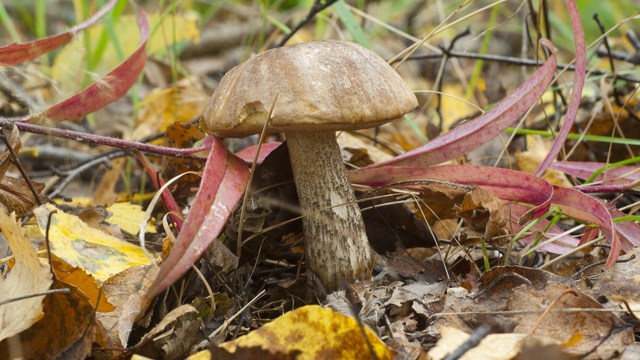 Mitrofanov Alexander/PhotoSpin
Mitrofanov Alexander/PhotoSpin
Springtime and summertime are full of brightly colored trees and plants. Berries and mushrooms that spring up after a rain are naturally intriguing to children. And while it’s fun and okay to look and study, do moms and dads really know which berries and mushrooms are okay to touch?
What do poisonous mushrooms and berries look like?
According to mycologist David Fischer, while there are thousands and thousands of wild mushroom species in North America, only 250 are “significantly poisonous” mushrooms which fall under eight different categories, depending on the particular toxin and symptoms and syndromes that may result from eating them.
You can read a complete detailed list of mushrooms here.
To play it safe, it is best to not eat any mushrooms that appear in your path or yard.
Berries and plants also present a challenge in terms of identifying which are poisonous and which are not. Like mushrooms, berries can appear bright and colorful and enticing.
Here are two sites that can help you identify what’s in your backyard or vacation spot, or help you plan a child- and pet-friendly garden:
The Children’s Hospital of Philadelphia Poison Control Center: Berries and Seeds
What to do if your child eats a poisonous berry or mushroom?
Sometimes the warning, “It’ll make your tummy sick,” isn’t enough to derail a child’s curiosity, especially if the berries or mushrooms are easily within reach. Sometimes temptation is much too hard to resist.
Symptoms of mushroom poisoning include:
· Delayed onset of symptoms, sometimes as long as 12 hours or more
· Symptoms may appear to go away, but then return
· Vomiting, sometimes acute
· Stomach cramps, sometimes acute
· Diarrhea, sometimes with blood
· Nausea
Depending on the toxin and type of mushroom, heart failure due to dehydration can occur, as well as kidney and liver failure, which usually results in death.
There are no antidotes for mushroom toxins. Doctors can only attempt to treat the symptoms and reduce the damage to the body’s organs. To help doctors determine which toxin your child might have ingested though, make sure you take a sample with you.
“Casual handling of poisonous mushrooms won’t hurt you.” (2)
The best cure for mushroom poisoning is prevention.
Symptoms of poisoning by berries and seeds include:
· Vomiting
· Stomach cramps
· Diarrhea
· Heart rate changes
· Drowsiness
· Confusion
· Muscle weakness
· Difficulty breathing
If you suspect your child has eaten something toxic, call your Poison Control Center immediately!
Awareness is always the best prevention.
1) Know the names of the plants that grow in your region and in the areas directly around your home. If you’re not sure of the name, take a sample to a nursery or garden center. Write the Latin name of the plant on a waterproof tab and attach it to the plant.
2) Inspect any play areas for any weeds and plants and, if possible, remove them before your children find them.
3) Avoid using real toxic berries (such as holly) in your decorations. Use artificial berries instead.
4) “Teach your child to never put leaves, stems, bark, seeds, nuts or berries from any plant into their mouths.” (4)
5)“Do not assume a plant is not poisonous because birds or other wildlife eat it.” (4)
Sources:
1. A detailed look at America’s poisonous mushrooms. Fischer, David. AmericanMushrooms.com. Web. July 17, 2013.
http://americanmushrooms.com/toxicms.htm
2. Poisonous Mushrooms. Missouri Department of Conservation. Web.July 17, 2013.
http://mdc.mo.gov/discover-nature/outdoor-recreation/mushrooming/poisono...
3. Poisonous Mushrooms. Tkaczyk, Filip. Web. July 17, 2013.
http://www.wildernesscollege.com/poisonous-mushrooms.html
4. Berries and Seeds. The Children’s Hospital of Philadelphia: The Poison Control Center. Web. July 17, 2013.
http://www.chop.edu/service/poison-control-center/resources-for-families...
5. Cute Killers: 16 Unassuming-but-Lethal Poison Plants.
WebEcoist.Web. July 17, 2013.
http://webecoist.momtastic.com/2008/09/16/16-most-unassuming-yet-lethal-...
Reviewed July 17, 2013
By Michele Blacksberg RN
Edited by Jody Smith





Add a CommentComments
There are no comments yet. Be the first one and get the conversation started!